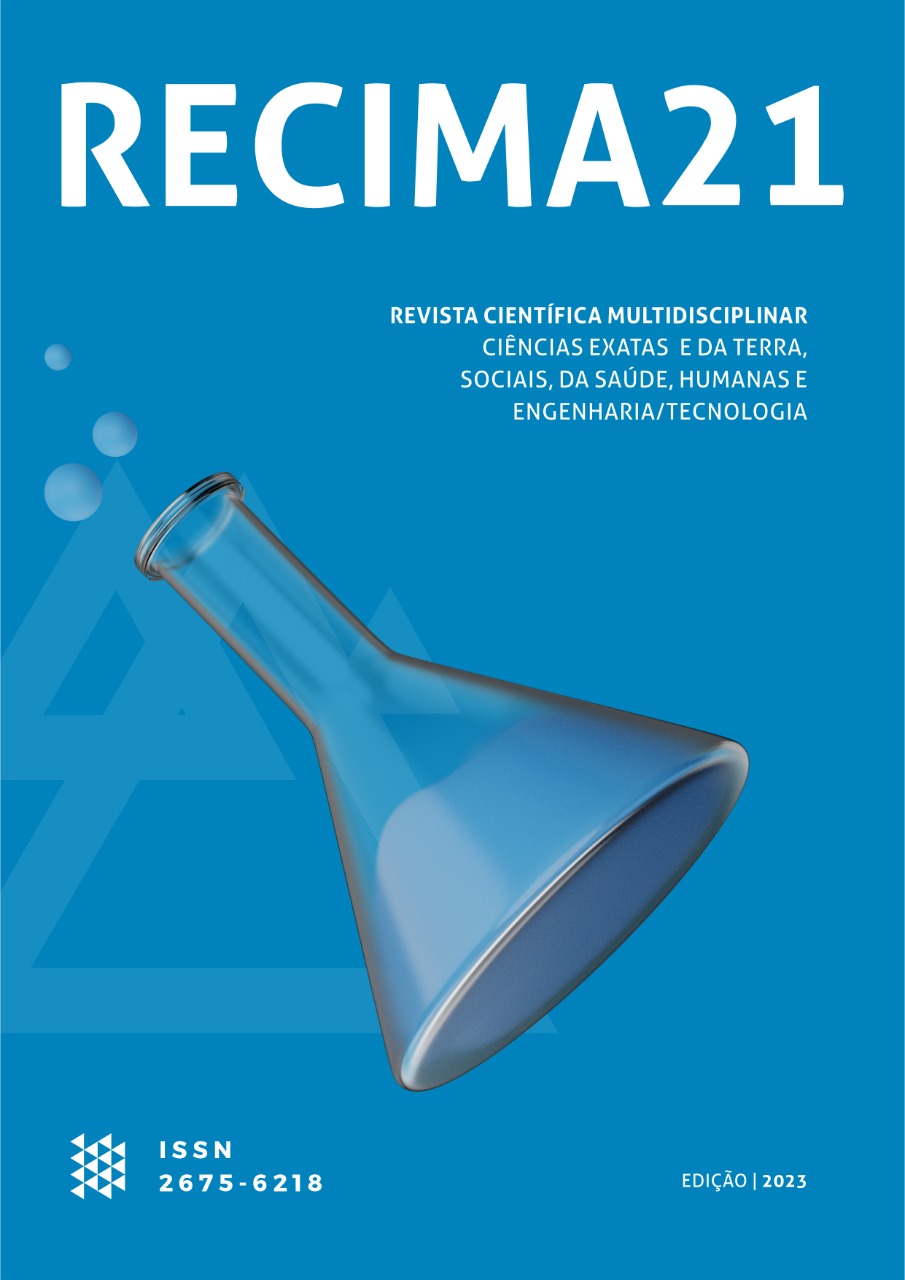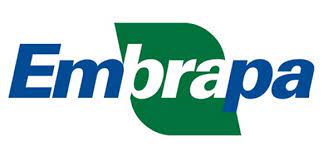X-LINKED ADRENOLEUKODYSTROPHY IN A CHILD: CASE REPORT AND LITERATURE REVIEW
DOI:
https://doi.org/10.47820/recima21.v4i5.3098Keywords:
Adrenoleukodystrophy, Peroxisome Disorders, Lipid Metabolism, Hereditary DiseaseAbstract
Adrenoleukodystrophy is a genetic disease linked to the X chromosome that affects almost exclusively males, with an incidence of 1:20,000 live births. The enzymatic error can cause a very variable clinical picture and several disturbances may occur. The symptomatology is quite nonspecific, which delays the identification of the pathology. The diagnosis is made by checking serum levels of very long-chain fatty acids, changes in central nervous system imaging and/or genetic testing. A cure is not guaranteed, but early diagnosis and bone marrow transplantation can lead to a relatively normal life. Methodology: Case study of a child with adrenoleukodystrophy, based on information gathered from medical records and complementary exams, organized in chronological order. Results: The child had a family history of leukodystrophy in a maternal uncle who died in childhood. Symptoms began at age six, initially with mood swings. After one year, he presented ataxic gait, significant reduction in visual acuity, language disorders and psychomotor involution. Neuroimaging exams detected white matter lesions in both cerebral hemispheres and there were clinical and laboratory signs of adrenal insufficiency. Measurement of very long chain fatty acids confirmed the diagnosis. Bone marrow transplantation was no longer viable due to the severity of the symptoms. Due to infectious complications, he died at seven years and eight months. Conclusions: Genetic counseling could have been useful in preventing or contributing to earlier detection and more assertive treatment.
Downloads
References
Engelen M, van Ballegoij WJC, Mallack EJ, Van Haren KP, Köhler W, Salsano E, et al. International Recommendations for the Diagnosis and Management of Patients With Adrenoleukodystrophy: A Consensus-Based Approach. Neurology. 2022;99(21):940-951.
Silva SM, Martins AES. Adrenoleucodistrofia: uma doença genética ligada ao coromossomo X. Temas em saúde. 2017;17(2):4-11.
Barbier M, Sabbagh A, Kasper E, Asheuer M, Ahouansou O, Pribill I, Forss-Petter S, Vidaud M, Berger J, Aubourg P. CD1 Gene Polymorphisms and Phenotypic Variability in XLinked Adrenoleukodystrophy. PloS One. 2012; 7(1):e29872.
Lund TC, Stadem PS, Panoskaltsis-Mortari A, Raymond G, Miller WP, Tolar J, et al. Elevated Cerebral Spinal Fluid Cytokine Levels in Boys with Cerebral Adrenoleukodystrophy Correlates with MRI Severity. PLoS ONE. 2012;7(2):e32218.
Papierska L, Rabijewski M. Delay in Diagnosis of Adrenal Insufficiency Is a Frequent Cause of Adrenal Crisis. International Journal of Endocrinology. 2013; 2013:1–5.
Van Geel BM, Assies J, Wanders RJA, Barth PG. X linked adrenoleukodystrophy: clinical presentation, diagnosis, and therapy. Journal of Neurology, Neurosurgery & Psychiatry. 1997;63(1):4–14.
Gujral J, Sethuram S. An update on the diagnosis and treatment of adrenoleukodystrophy. Current Opinion in Endocrinology, Diabetes & Obesity. 2022;30(1):44–51.
Uto T, Contreras MA, Gilg AG, Singh I. Oxidative Imbalance in Nonstimulated X-Adrenoleukodystrophy-Derived Lymphoblasts. Developmental Neuroscience. 2008;30(6):410–8.
Peters C, Charnas LR, Tan Y, Ziegler RS, Shapiro EG, DeFor T, et al. Cerebral X-linked adrenoleukodystrophy: the international hematopoietic cell transplantation experience from 1982 to 1999. Blood. 2004;104(3):881–8.
Santos AC. Adrenoleucodistrofia ligada ao X: diagnóstico e quantificação da progressão. Radiologia Brasileira. 2014;47(6):7–8.
Powers JM, Liu Y, Moser AB, Moser HW. The Inflammatory Myelinopathy of Adreno-Leukodystrophy. Journal of Neuropathology and Experimental Neurology. 1992;51(6):630–43.
Kemp S, Berger J, Aubourg P. Xlinked adrenoleukodystrophy: Clinical, metabolic, genetic and pathophysiological aspects. Biochim Biophys Acta. 2012; 1822(9):1465-74.
Powers JM, DeCiero DP, Ito M, Moser AB, Moser HW. Adrenomyeloneuropathy. Journal of Neuropathology & Experimental Neurology. 2000;59(2):89–102.
Moser HW. Adrenoleukodystrophy: natural history, treatment and outcome. Journal of Inherited Metabolic Disease. 1995;18(4):435–47.
Van Geel BM, Bezman L, Loes DJ, Moser HW, Raymond GV. Evolution of phenotypes in adult male patients with X-linked adrenoleukodystrophy. Annals of Neurology. 2001;49(2):186–94.
Laureti S, Casucci G, Santeusanio F, Angeletti G, Aubourg P, Brunetti P. X-linked adrenoleukodystrophy is a frequent cause of idiopathic Addison’s disease in young adult male patients. The Journal of Clinical Endocrinology & Metabolism. 1996;81(2):470–4.
Moser HW, Moser AB, Hollandsworth K, Brereton NH, Raymond GV. “Lorenzo’s oil” therapy for X-linked adrenoleukodystrophy: rationale and current assessment of efficacy. Journal of molecular neuroscience: MN [Internet]. 2007;33(1):105–13.
Loes DJ, Hite S, Moser H, Stillman AE, Shapiro E, Lockman L, Latchaw RE, Krivit W. Adrenoleukodystrophy: a scoring method for brain MR observations. AJNR Am J Neuroradiol. 1994;15(9):1761-6.
Moser HW, Raymond GV, Dubey P. Adrenoleukodystrophy: new approaches to a neurodegenerative disease. JAMA. 2005;294(24):3131-4.
Aubourg P, Adamsbaum C, Lavallard-Rousseau M-C, Rocchiccioli F, Cartier N, Jambaque I, et al. A Two-Year Trial of Oleic and Erucic Acids (“Lorenzo’s Oil”) as Treatment for Adrenomyeloneuropathy. New England Journal of Medicine. 1993;329(11):745–52.
Moser HW, Bezman L, Lu SE, Raymond GV. Therapy of X-linked adrenoleukodystrophy: prognosis based upon age and MRI abnormality and plans for placebo-controlled trials. J Inherit Metab Dis. 2000;23(3):273-7.
Gasparetto EL, Rosa JM, Davaus T, Carvalho Neto A de. Cerebral X-linked adrenoleukodystrophy: follow-up with magnetic resonance imaging. Arquivos de Neuro-Psiquiatria. 2006;64(4):1033–5.
Kemp S, Pujol A, Waterham HR, van Geel BM, Boehm CD, Raymond GV, et al. ABCD1 mutations and the X-linked adrenoleukodystrophy mutation database: Role in diagnosis and clinical correlations. Human Mutation. 2001;18(6):499–515.
Gärtner J, Braun A, Holzinger A, Roerig P, Lenard H-G ., Roscher A. Clinical and Genetic Aspects of X-Linked Adrenoleukodystrophy. Neuropediatrics. 1998;29(01):3–13.
Singh I, Moser AE, Goldfischer S, Moser HW. Lignoceric acid is oxidized in the peroxisome: implications for the Zellweger cerebro-hepato-renal syndrome and adrenoleukodystrophy. Proceedings of the National Academy of Sciences. 1984;81(13):4203–7.
Boles DJ, Craft DA, Padgett DA, Loria RM, Rizzo WB. Clinical variation in X-linked adrenoleukodystrophy: Fatty acid and lipid metabolism in cultured fibroblasts. Biochemical Medicine and Metabolic Biology. 1991;45(1):74–91.
Aubourg P. X-linked adrenoleukodystrophy. Annales d’Endocrinologie. 2007;68(6):403-411.
Grosko AP, Ferreira RJ. Aspectos biológicos e moleculares da Adrenoleucodistrofia. Arquivos de Ciências da Saúde da UNIPAR. 2006;10(1):43–7.
Inoue S, Terada S, Matsumoto T, Ujike H, Uchitomi Y. A Case of Adult-onset Adrenoleukodystrophy with Frontal Lobe Dysfunction: A Novel Point Mutation in the ABCD1 Gene. Internal Medicine. 2012;51(11):1403–6.
Renaud DL, Khan S. Development of a multidisciplinary programme for the treatment of X-linked adrenoleukodystrophy. Paediatrics and Child Health. 2009;19:217–219.
Downloads
Published
How to Cite
Issue
Section
Categories
License
Copyright (c) 2023 RECIMA21 - Revista Científica Multidisciplinar - ISSN 2675-6218

This work is licensed under a Creative Commons Attribution 4.0 International License.
Os direitos autorais dos artigos/resenhas/TCCs publicados pertecem à revista RECIMA21, e seguem o padrão Creative Commons (CC BY 4.0), permitindo a cópia ou reprodução, desde que cite a fonte e respeite os direitos dos autores e contenham menção aos mesmos nos créditos. Toda e qualquer obra publicada na revista, seu conteúdo é de responsabilidade dos autores, cabendo a RECIMA21 apenas ser o veículo de divulgação, seguindo os padrões nacionais e internacionais de publicação.

 Clique para ver detalhes
Clique para ver detalhes 











